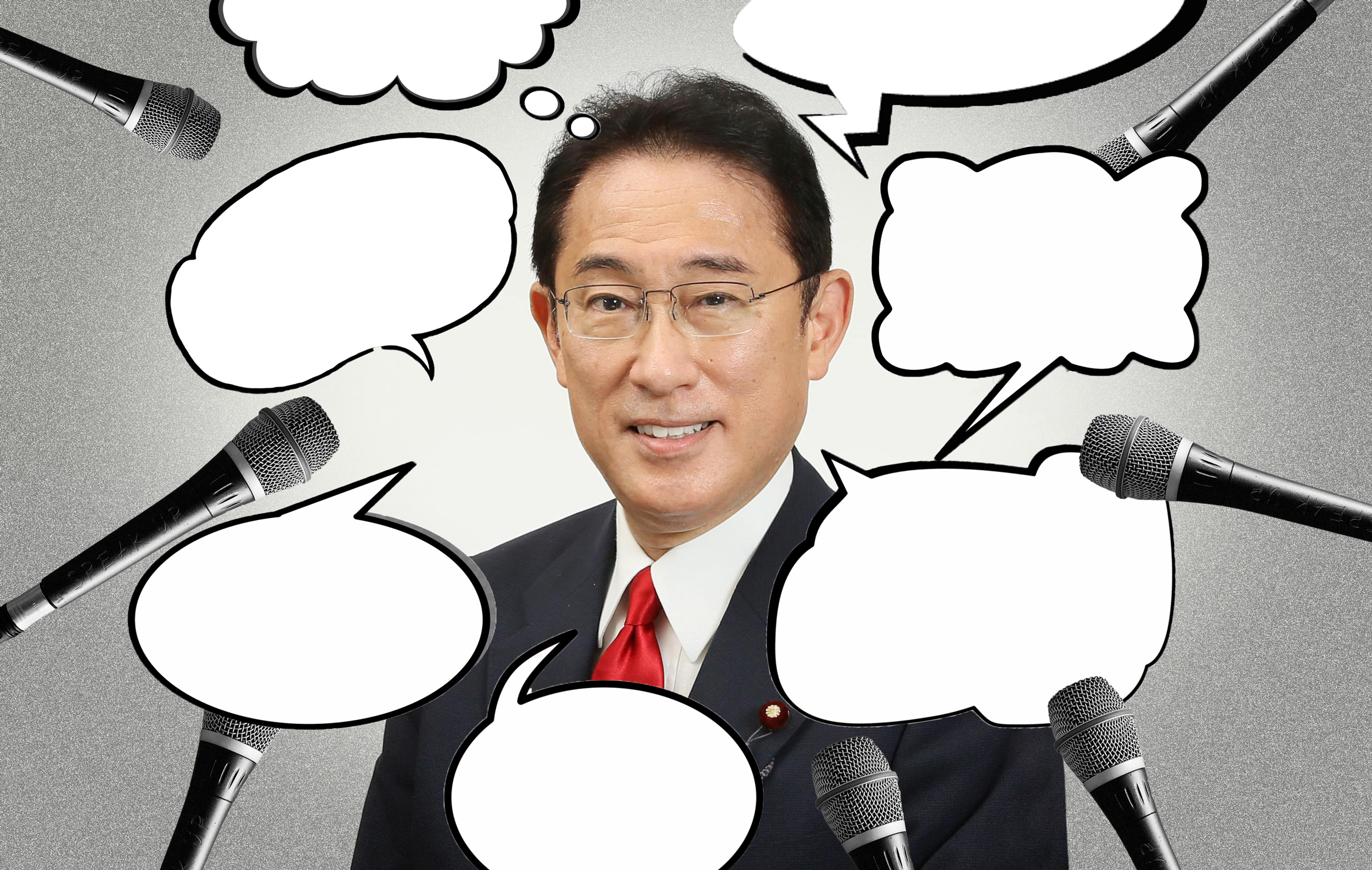Issue:
April 2022
Japan’s media are giving Fumio Kishida an easy ride

Who remembers the relentless media criticism of Japan’s last prime minister, Yoshihide Suga? The headlines took him to task for the slow Covid-19 vaccine rollout, insufficient anti-virus measures and the Tokyo Olympics. Many would agree that he deserved the brickbats. His successor as prime minister, Fumio Kishida, has enjoyed a prolonged honeymoon by comparison. He was given an easy ride, even as Covid-19 cases, driven by the highly infectious omicron variant, reached 100,000 a day and Kishida failed to come up with new measures. When it became clear that booster jabs were being administered too slowly – as if the lessons of the past had been ignored – again the media pulled their punches.
“The media may be tired of criticizing, or think that criticism is no longer useful, especially in the face of omicron, which is considered less dangerous?” political analyst Atsuo Ito said during a program on Bunka Hoso radio in January in explaining why the media were giving Kishida an easy rise. “But one of the main roles of the media is to objectively judge and point the finger at problems.”
So why isn’t this happening with Kishida?
One possible reason is that Kishida gives Japanese journalists what they want in the form of regular briefings reserved for major media outlets. On January 13, the Jiji news agency published an article noting that Kishida had conducted 56 burasagari stand-up interviews in his first 100 days in office. The article interpreted this as evidence that Kishida wanted to show he was a good listener and would act pre-emptively to political challenges.
By contrast, Suga held just 32 burasagari in his first 100 days. In addition, his briefings were much shorter than those given by Kishida, who always takes lots of questions. As a result, his burasagari interactions can last up to 40 minutes. Political journalists are understandably happy. The same Jiji article noted, however, that by talking too much, Kishida risked giving the impression that he was a ditherer.
Unlike my Japanese colleagues, I was angered by Kishida’s enthusiasm for burasagari. It was obvious that he was using the encounters to avoid holding real press conferences, where he would be confronted with less sympathetic journalists asking tough questions. By mid-February, independent journalists, foreign and online reporters were raising concerns about the lack of formal press conferences.
In response, the chief cabinet secretary, Hirokazu Matsuno, said other members of the government held regular press conferences, adding that interacting with the media was not the sole preserve of the prime minister. But the pressure continued and, recently, there was a resumption of press conferences open to journalists who do not belong to kisha clubs – such as freelancers and foreign reporters – who are given 10 seats chosen by lottery.
When regular press conferences resumed on February 17, the Japanese media said it was for the first time since January 4. They seemed to have forgotten, however, that Kishida’s January 4 press conference, held at Ise-Jingu shrine, was open only to major Japanese media. We foreign journalists were not even informed of the event, let alone invited. In fact, the February 17 press conference was the first since December 21, 2021.
Last month, Kishida increased the number of press conferences – a reflection of the increasingly disturbing situation in Ukraine. Yet there is still a lot of room for improvement. It is true that, unlike his predecessor, Kishida is able to answer some questions without referring to his notes. He knows how to formulate his own sentences, and seems less confused. But does that make his remarks clearer? The jury is still out on that. His responses are often evasive and risk-free, with the important exception of his firm condemnation of the Russian invasion of Ukraine.
As for the coronavirus, what has Kishida done to respond to the end of the sixth wave of infections and be better prepared for the seventh? It is still hard to find affordable antigen tests at pharmacies and people are still dying at home after being refused admission to hospital. It is hard to say that the situation has improved since Kishida replaced Suga.
Even so, Kishida’s approval ratings are rising, reaching 50.2% in March, according to Jiji, and exceeding 60%, according to another poll. That has been driven by Japan’s response to the war in Ukraine and the unprecedented stance it has taken in quickly accepting Ukrainians fleeing the conflict.
As a foreign journalist, I am concerned that the government and media agree that Japanese journalists should not be sent to cover the war Ukraine, on the pretext that it would place them in danger. I recently asked Kishida if it was acceptable for Japanese media companies to depend largely on foreigners for articles and images about the conflict. He answered: “We ask Japanese people to refrain from traveling to Ukraine, for whatever reason. Thank you for your understanding.” If every governments of the world did this, no one would know what is really happening in Ukraine.
Major newspapers and broadcasters, as well as Japanese society at large, agree with the government. That means that only JNN (a TBS affiliate) has a journalist on site. With no staff reporters in Ukraine to offer coverage from on the ground, TV networks instead give air time to commentators and “personalities” who often make ignorant, irresponsible comments. In early March, Abema TV questioned the need to have reports on the ground in the era of social media. The fact that this question is even being asked is proof that Japan’s media are not having a good war.
Karyn Nishimura is a correspondent for the French daily newspaper Libération and Radio France.

